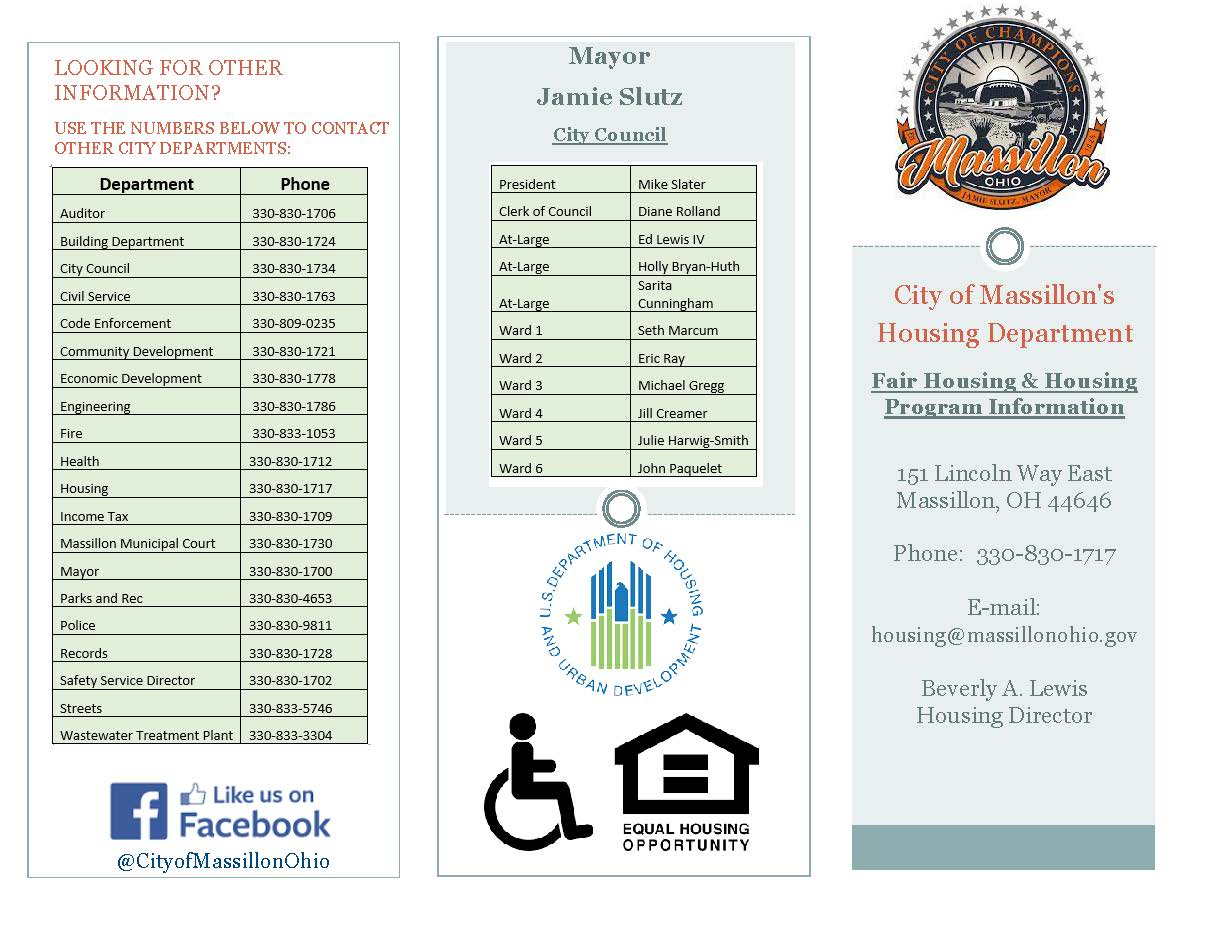
Beverly Lewis
Housing Director & Fair Housing Coordinator
blewis@massillonohio.gov
Anna Jordan
Community Development Coordinator
ajordan@massillonohio.gov
Tel: 330-830-1717 | Fax: 330-830-1778
Municipal Government Annex
151 Lincoln Way East | Massillon, OH 44646
Ohio Relay Phone Number: 711 or 1-800-750-0750
About our Program
The City of Massillon operates its own fair housing program that is designed to improve and promote housing opportunities in the community, including education and outreach, monitoring and evaluation, and administration of fair housing laws.
As a HUD based housing program we are dedicated to furthering Fair Housing and Equal Opportunity within the City. Our goals and objectives are in line with the Department of Housing and Urban Developments (HUD) Fair Housing & Equal Opportunity (FHEO) national objectives of eliminating housing discrimination. We believe that through the promotion of diversity, inclusion, and opportunity, we can strengthen our neighborhoods and communities here within our great city. We adhere to and uphold both federal and State of Ohio Fair Housing and anti-discrimination laws.
Our department also addresses tenant/landlord issues, Fair Housing Discrimination Complaints, and conducts periodic workshops and counseling services between the tenant and landlord.
Mission Statement
Our mission is to provide decent, safe, and sanitary conditions for low and moderate income homeowners by offering fair housing & anti discrimination tenant/landlord services, as well as several housing rehabilitation programs.
Housing Programs and Information
Your rights as a landlord or tenant

Phone Numbers that may assist you
Greater Stark County Urban League
330-456-3479
Massillon Clerk of Courts
330-830-1731
Massillon Code Enforcement
330-809-0235
Massillon Health Department
330-830-1710
Community Legal Aid Services
866-584-2350
Stark Metropolitan Housing Authority
Massillon Office 330-837-9392
Canton Office 330-454-8051
Stark County Bar Association
330-453-0686
Stark County Community Action Agency
330-454-1676
Stark County Fair Housing
330-451-7775
Note: The information provided on this website does not, and is not intended to, constitute legal advice; instead, all information, content, and materials available on this site are for general informational purposes only. Information on this website may not constitute the most up-to-date legal or other information.
Funded by: Community Development Block Grant Funds provided through the United States Department of Housing and Urban Development (HUD).


